I find it’s useful to divide backcountry packing lists into five categories: camping gear, hiking gear, cooking gear, organisational gear, and food. This helps to keep track of what’s done and what’s left to do. It’s also easier to look at short packing lists by category than to look at one long, messy list.
Our packing lists for backcountry hikers are aimed at couples hiking together, but they can very easily be adapted to individuals or to small groups. Anyone who can share gear and work together to lighten their collective loads definitely should!
To make it easier to use these camping, hiking, and cooking gear packing lists, I’ve included a free printable PDF download at the end of the article, so keep reading!
Hiking Gear Packing List
These are the basic items we wear or carry while hiking in the backcountry:
- Hiking boots
If we know we’ve got a large water crossing, we also pack water shoes. They’re sturdier than bare feet on slippery surfaces.
- Spare laces
Just in case one of the laces on our boots fray through while we’re hiking… I had to use a spare set of laces once, and I know I’ll be using another very soon from what my current laces looks like!
- Performance socks
Good technical socks are essential to keeping our feet dry and comfortable. They dry quickly so we wear the same pair every day. We bring an extra pair on longer trips, though. There’s a limit to just how smelly we can stand ourselves!
- Field pants
We wear our field pants no matter how warm it is. They’re lightweight enough to keep cool, they dry quickly if they get wet, and most importantly, they protect our legs from all those branches sticking out on the trail. And it doesn’t hurt that they keep the bugs out, too.
- Dry-wicking shirt
We appreciate wearing something that dries quickly, particularly when we take off our backpacks and realise our backs are all sweaty…
- Arm sleeves
These are great for protecting my arms from UV rays, branches, and bugs while still allowing air flow to my arm pits. Marc doesn’t wear any, though I think he may be starting to consider it.
- Hat
To block out the sun, and to keep bugs, leaves, and twigs out of long hair…
- Hiking poles
These are handy in hilly terrain, especially for reducing strain on the knees when going downhill.
- Water bottles and filters
We have one each.
- Camera
- Patagonia raincoat
I’ve had my Women’s Storm Jacket for over six years and I absolutely love it. It’s been everywhere with me — on treks and travels around the world. It was even my winter jacket while I was working in Vancouver during the Olympics and while I was living in South Korea. So now we’ve finally bought a Men’s Storm Jacket for Marc, and the timing was great — there’s a wicked sale on right now! We can’t wait to get his new Patagonia raincoat in the mail this week (smiley face).
- Backpack rain covers
Again, we have one each.
- Bug vests
Ditto.
- Homemade natural bug spray
Our recipe is safe for people and pets, helping to protect against ticks, mosquitoes, black flies, and fleas.
- Sunscreen
There are some things we can share, like this and most of the items below…
- Toilet paper and trowel
We usually don’t need the trowel at camp, but it’s good to have while hiking around…
- Watch face
We carry a watch, bracelet removed, so that we can tell the time without having to turn on our cell phones and waste the batteries. A watch battery lasts a lot longer!
- Whistle
A whistle could be used as a signalling device, but in the past, I’ve used it to frighten off intimidating wildlife…
- Compass
- Multi-tool
- Pen flare
- Duct tape
- Waterproof matches
- Emergency blankets
We have one for each of us, and we both carry our own in case we get separated.
- Wind-up flashlight
- Hand sanitizer
- First aid kit (containing baking soda, tweezers, adhesive bandages, gauze, first aid cream, triangle bandage, tensor bandage, antiseptic towelettes, latex gloves, first aid booklet)
The baking soda, mixed with water, makes a paste that relieves itchiness from bug bites. The tweezers are to extract ticks.
Camping Gear Packing List for Backcountry Hikers
Update (August 21, 2015): In fact, we’ve both been within our target range for all our 2014 and 2015 backpacking trips (smiley face). And since writing these packing lists, I refer to them constantly as I ready our gear. They’ve been really useful to me!
This is the list of camp gear we bring on overnight backcountry hiking trips:
- Tent
- Sleeping pads
Here’s another item we each need to have.
- Sleeping bags
And another, though we zip them together so we can share our body heat (and maybe even snuggle a little).
- Inflatable pillow
We actually use stuff sacks full of clothes as pillows, so the inflatable pillow is for my knees. I’m starting to feel some more aches and pains as the years go by…
- Camp chairs
Some might say this is a camp luxury, but we feel it’s worth being comfortable at camp. We’ve each got great lightweight camp chairs that allow us actually to enjoy the time we spend at camp.
- Fleece sweater and pants
Fleece is lightweight and dries quickly, which makes it an obvious choice for camp clothes.
- T-shirt
Depending on the time of year, we might replace the t-shirt with a long-sleeved shirt, or we might bring both. Likewise, we might bring a pair of shorts to wear at camp as well.
- Camp socks
Something to give our feet a rest from our smelly, sweaty hiking socks, and to keep the mosquitoes away at night.
- Spare undies
- Camp shoes
We’ve both got lightweight sandals we bring to wear at camp so we can rest our feet from our hiking boots.
- Personal microfiber towels
- Tooth brushes
Cutting the handles off helps us to save space and pack more efficiently, and some argue it makes a difference in carrying weight if you’re trying to go ultra-light.
- Tooth paste
Why waste space on a tube of tooth paste? We get Lush’s Toothy Tabs, only bringing along the exact amount we need for our trip.
- Flashlight and head lamp
- Rope
In case we need to hang something or tie up the dogs, etc.
- Plastic shopping bags
We bring a couple for trash and wet stuff.
- Plastic garbage bags
We bring two and put them over our backpacks overnight in case it rains, making sure to wrap the bottoms, too.
- Needle and thread
Just in case we need to patch our tent or our backpacks…
- Playing cards
In case it rains while at camp, we have something to do in the tent…
- Collapsible sink
- Camp suds
Since these are biodegradable, work well in water, and only take a few drops, these are a good choice for all camp soap needs, including washing dishes, hands, body, clothing, or anything else you can think of.
- Hand-knit dish cloth
These dry quickly and are lightweight without being specialty items, which is why I like them for washing dishes.
- Microfiber drying towel
We used to bring regular tea towels to dry our dishes, but they weigh too much and take too long to dry. We were doubtful whether a microfiber towel would work well for drying dishes, but it really does!
If it’s the right time of year, we’ll also bring our swimsuits, a larger towel to share, and our water shoes.
On fishing trips, we pack the fishing rod and tackle, too. Oh, and a book for me!
Cooking Gear Packing List for Backcountry Hikers
- Grill
We bring a small backpacker’s grill to facilitate cooking over the fire, but often we find a grill has been left at our campsite. Still, it’s not worth risking not having one to save a bit of weight, so we always bring it. There’s just no guarantee we’ll be able to find rocks flat enough to serve as a cooking surface…
- Stove and small fuel can
We generally cook over the fire, but we always bring our lightweight collapsible stove and a bit of fuel in case it rains. We pack more fuel if there’s a fire ban.
- Nesting pots
We’ve stopped bringing the pan that came with our set of nesting pots since we don’t really use it and can do without it. Two pots are enough for us.
- Tea steeper
- Measuring cup
We use this to measure the water for our dehydrated meals, to measure our oatmeal, and to measure our daily portion of trail mix.
- Plates
Our plates have high edges so we can use them as bowls if we need to. We bring one each, though we don’t always use them if we’re just eating out of the dehydrated meal package.
- Mugs
We bring one each for our morning tea.
- Camp spoons and knife
With one spoon each, it’s easy to share our dehydrated meals. We’ve stopped bringing our camp forks since we really don’t need them, and we only bring one camp knife in case we need it, but we usually find the spoons are sufficient.
On fishing trips, we also pack a hand-held toaster which Marc uses to make his flatbread. And of course we need to bring a small cutting board and filet knife, too. Plus, we pack a camp spatula in case Marc doesn’t catch anything and we have to make eggs (winky face).
Packing Lists for Backcountry Hikers: Follow-Up
Tip: You can click directly within the table to edit its contents (smiley face). If you want to save your changes for the next time you plan a trip, scroll down to download the print-friendly version.
| Hiking Gear | Camping Gear | Cooking Gear | |||
|---|---|---|---|---|---|
| Hiking boots | Tent | Stove and fuel | |||
| Spare laces | Sleeping pads | Plates | |||
| Performance socks | Sleeping bags | Mugs | |||
| Field pants | Inflatable pillow | Spoons | |||
| Dry-wicking shirt | Rope | Tea steeper | |||
| Arm sleeves | Plastic shopping bags | Measuring cup | |||
| Hat | Plastic trash bags | Nesting pots | |||
| Hiking poles | Camp chairs | Grill | |||
| Water bottles and filters | Flashlight and headlamps | Collapsible sink | |||
| Raincoats | Fleece sweaters and pants | Camp suds | |||
| Pack rain covers | T-shirts | Hand-knit dishcloth | |||
| Bug vests and spray | Camp socks | Microfiber drying towel | |||
| Sunscreen | Spare undies | ||||
| Toilet paper and trowel | Camp shoes | ||||
| Watch face | Personal microfiber towels | ||||
| Camera | Toothbrushes | ||||
| Whistle | Toothpaste | ||||
| Compass | Needle and thread | ||||
| Multi-tool | Playing cards | ||||
| Pen flare | Swimsuits | ||||
| Duct tape | Large Microfiber towel to share | ||||
| Waterproof matches | Water shoes | ||||
| Emergency blankets | Fishing rod and tackle | ||||
| Hand sanitizer | |||||
| First aid kit (baking soda, tweezers, bandages, gauze, first aid cream) | |||||
| Click here to view a shareable image (smiley face). | |||||
Free Packing Lists Download!
If you like these hiking, camping, and cooking gear packing lists, download this free and handy printable PDF packing checklist for backcountry hikers [83 kilobytes] (smiley face).
For more info on where to buy a lot of the gear mentioned here in these packing lists for backcountry hikers, check out Backcountry Gear Shopping in Toronto.
There are also some great backcountry packing tips in the rest of the Backpacking Meal Plans, Packing Lists and Tips for Hikers and Casual Paddlers series. How we pack food and gear on a hiking trip is coming up next.
- Meal Plans for Backcountry Hikers
- Packing Tips for Backcountry Hikers
- Meal Plans, Packing Lists, and Tips for Casual Backcountry Paddlers
Sign up to be notified of new posts via email to make sure you don’t miss the rest of this series!




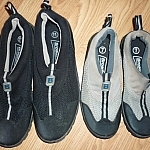


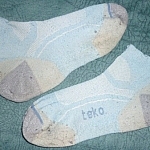

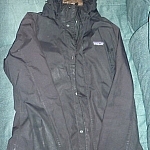
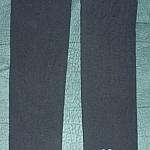
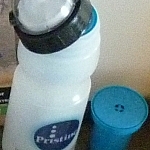
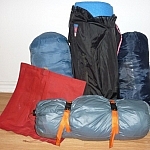
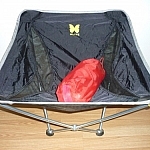

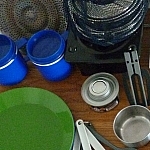
Search Niackery
×